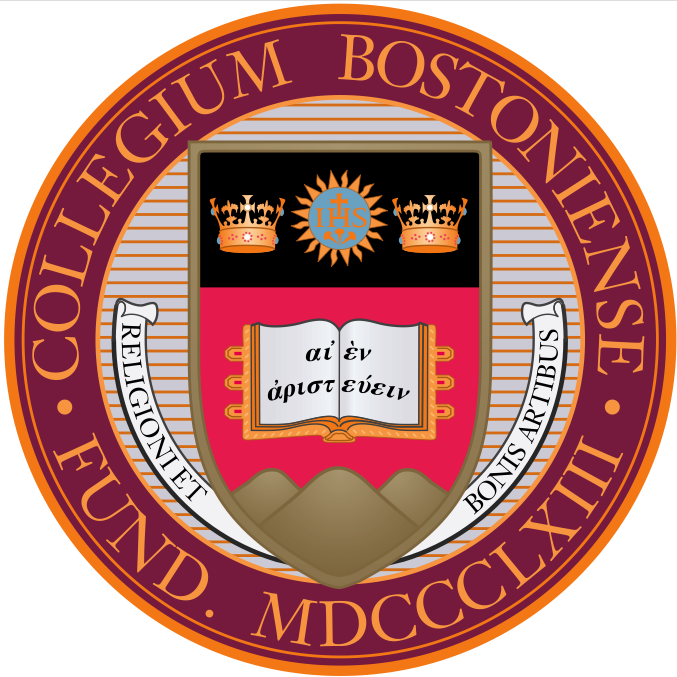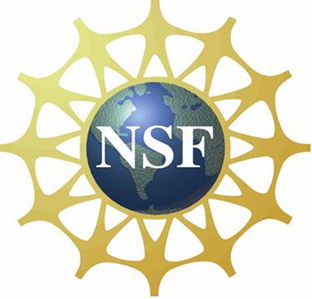Sponsored by

Boston College

HMI

NSF
|
The 4th William
Rowan
Hamilton Geometry and
Topology Workshop
August 28-30, 2008
The Hamilton Mathematics
Institute,
Trinity College Dublin
Heegaard
splittings, mapping class groups,
curve
complexes and related topics
Schedule of Talks
All talks will be held in
the Salmon
Lecture Theatre in the Hamilton Building, TCD (see interactive campus map).
Time
|
Speaker
|
Talk
|
Thursday
|
|
9.30
- 10.30
|
Cameron
Gordon |
Heegaard genus and
Dehn surgery
|
10.30-10.45
|
COFFEE
|
10:45
- 11:45
|
Darryl
McCullough |
Disk complexes, arc
complexes, and knots
|
11:45
- 1:30
|
LUNCH |
1:30
- 2:30
|
Joel
Hass |
Families of
harmonic maps and stabilization of Heegaard splittings |
2:45
- 3:45
|
Yair
Minsky
|
Dynamics of Out(F_n)
in character varieties
|
4:00
- 5:00
|
Danny
Calegari
|
Stable commutator
length is rational in free groups
|
Friday
|
|
9:30
- 10:30
|
Martin Scharlemann |
Reconfiguring
Qiu's proof of the Gordon Conjecture
|
10.30 - 10.45
|
COFFEE
|
| 10:45
- 11:45 |
Saul
Schleimer
|
The
geometry of train track splitting sequences |
| 11:45
- 1:30 |
LUNCH |
| 1:30
- 2:30 |
Vladimir Markovic |
Random
ideal triangulations and the Weil-Petersson distance between finite
degree covers of punctured Riemann surfaces |
| 2:45
- 3:45 |
Joan Porti |
Collapsing
three-manifolds |
| 4:00
- 5:00 |
Jeff
Brock |
Bounded geometry and
combinatorics for hyperbolic Heegaard splittings
|
Saturday
|
|
| 9:30
- 10:30 |
Moon
Duchin
|
Curves on flat
surfaces |
10.30 - 10.45
|
COFFEE
|
| 10:45
- 11:45 |
Juan
Souto |
Some remarks about
the mapping class group |
11.45 - 1.30
|
LUNCH
|
1.30 - 2.30
|
Richard
Weidmann |
Maps
onto hyperbolic groups |
2.45 - 3.45
|
Brian Bowditch
|
TBA
|
| END OF
WORKSHOP |
Abstracts
Speaker: Cameron Gordon (Texas)
Title: Heegaard genus and Dehn surgery
Abstract:
We will discuss the behavior of Heegaard genus under Dehn filling,
focusing on the case of knots in S^3. We will also apply our results to
the conjecture that any Seifert fibered Dehn surgery on a
hyperbolic knot in S^3 must be integral. (Joint work with Ken Baker
andJohn Luecke.)
Speaker: Darryl McCullough (Oklahoma)
Title: Disk complexes, arc complexes, and knots
Abstract:
We will discuss: (1) The tree of knot tunnels, a
classification of all tunnels of all tunnel number 1 knots (or
equivalently of the genus-2 Heegaard splittings of the exteriors of
knots in the 3-sphere), using the disk complex of the genus-2
handlebody, (2) Depth and bridge numbers, the "depth" invariant of a
knot tunnel, and its application to bridge numbers of tunnel number 1
knots, and (3) Level position of
knots, an application of arc complexes to knot theory. These are joint
work
with Sangbum Cho, and part (3) is also joint with Arim Seo.
Speaker: Joel Hass (Davis)
Title: Families of harmonic maps and stabilization of
Heegaard splittings
Abstract:
We give examples for each genus greater than one of a 3-manifold
with two genus g Heegaard splittings that require g
stabilizations
to become equivalent. Previously known examples required at most
one
stabilization. Control of families of Heegaard surfaces is obtained
through a deformation
to harmonic maps.
This is joint work with Abigail Thompson and Bill Thurston.
Speaker: Yair Minsky (Yale)
Title: Dynamics of Out(F_n) in character varieties
Abstract:
We study the PSL(2,C) character variety X(F_n) of the free group, with
its natural action by Out(F_n). We make the observation that there is
an open, Out(F_n)-invariant subset on which Out(F_n) acts properly
discontinuously, but which is strictly larger than the Schottky space.
In particular it contains degenerate representations, and
representations with dense image. This suggests a dynamical dichotomy
different from the usual discrete/indiscrete one, but leaves open many
questions such as the what the maximal domain of discontinuity is, and
what the ergodic decomposition of the action looks like.
Speaker: Danny Calegari (Caltech)
Title:
stable commutator length is rational in free groups
Abstract:
Let G be a group, and g an element of its commutator subgroup. The
commutator length of g, denoted cl(g), is the smallest number of
commutators in G whose product is g. The stable commutator length,
denoted scl(g), is the limit scl(g) = cl(g^n)/n. We show that in a free
group, stable commutator length is rational, by an explicit
constructive argument. As a corollary, one can show that every rational
homology class in H_2 of a graph of free groups amalgamated over cyclic
subgroups is (virtually) represented by an embedded surface group.
Along the way we obtain a (polynomial time) algorithm to compute scl in
a free group. We describe some of the surprising results about the
values of this function that this algorithm reveals.
Speaker: Martin Scharlemann (Santa Barbara)
Title: Reconfiguring Qiu's proof of the Gordon Conjecture
Abstract:
In 2004 Ruifeng Qiu announced a proof of the Gordon
Conjecture: The sum of two Heegaard splittings is stabilized if and
only if one of the two summands is stabilized. His proof (and Bachman's
proof of the same vintage) have been difficult for topologists to
absorb. In this talk I hope to present some core ideas of his
proof.
Speaker: Saul Schleimer
(Warwick)
Title: The geometry of train track splitting sequences
Abstract:
The final step in the proof that the disk complex is Gromov
hyperbolic requires a delicate analysis of the geometry of train track
splitting sequences. We will sketch a proof that a splitting
sequence in
a surface S gives an unparametrized quasi-geodesic in the curve complex
C(Y), for any essential subsurface Y of S. As a consequence, a
Masur-Minsky hierarchy and a splitting sequence have bounded Hausdorff
distance in every C(Y). This is joint work with H. Masur and, in
part,
with L. Mosher.
Speaker: Vladimir Markovic (Warwick)
Title: Random ideal triangulations and the Weil-Petersson distance
between finite degree covers of punctured Riemann surfaces
Abstract:
We show that for any two punctured Riemann surfaces $S$ and
$R$ (of finite hyperbolic volumes) and every
$\epsilon>0$
one can explicitely construct finite degree unbranched covers
$S_{\epsilon} \to S$ and $R_{\epsilon} \to R$ such that the
Weil-Petersson
distance between $S_{\epsilon}$ and $R_{\epsilon}$ is less
than
$\epsilon$. This is joint work with Jeremy Kahn.
Speaker: Joan Porti (Barcelona)
Title: Collapsing three-manifolds
Abstract:
We propose a proof of Perelman's collapsing theorem, used at the end of
geometrization of three manifolds. Our proof does not use Alexandrov
spaces, but simplicial volume and Thurston's
hyperbolization for Haken manifolds. This is joint work with L.
Bessières, G.
Besson, M. Boileau and S. Maillot.
Speaker: Jeff Brock (Brown)
Title: Bounded geometry and combinatorics for hyperbolic Heegaard
splittings
Abstract:
Given a hyperbolic 3-manifold with a Heegaard splitting, one may
consider geometric implications of the combinatorics of meridians for
each side of the splitting in the curve complex of the Heegaard
surface. In his thesis, H. Namazi gave a sufficient condition for
bounded geometry, i.e. a lower bound to the injectivity radius, in
terms of Minsky's notion of bounded combinatorics. In fact a
hyperbolic 3-manifold with bounded geometry can admit splittings with
somewhat more general combinatorial properties; in this talk I will
discuss a more general necessary and sufficient combinatorial condition
for bounded geometry in hyperbolic 3-manifolds with splittings of
Heegaard distance at least 3. This is joint work with Yair
Minsky, Hossein Namazi, and Juan Souto.
Speaker: Moon Duchin
(Michigan)
Title: Curves on flat surfaces
Abstract:
Quadratic differentials on surfaces induce metrics that are
flat away from a finite number of cone points. We investigate the
length spectrum in this class of singular flat metrics, studying the
extent to which a metric is determined by length data for curves.
This is joint work with Chris Leininger and Kasra Rafi.
Speaker: Juan Souto (Michigan)
Title: Some remarks about the mapping class group.
Abstract:
I will sketch the proof that geodesics length functions are
convex with respect to suitably chosen Fenchel-Nielsen coordinates.
This permits to use Kerckhoff's strategy to prove that finite subgroups
of the mapping class group lift to the group of diffeomorphism.
Once this is done, I will sketch a quite simple proof of the
theorem of Morita asserting that the mapping class group itself does
not lift; the proof only uses Milnor's bound for the euler-number
of flat circle bundles. Finally, I will describe how to construct
injective homomorphisms between mapping class groups which do not
preserve the property of being pseudo-Anosov and have other curious
properties. These results are joint work with combinations of J.
Aramayona, M. Bestvina, K. Bromberg, T. Church, K. Fujiwara and C.
Leininger.
Speaker: Richard Weidmann (Heriot-Watt)
Title: Maps onto hyperbolic groups
Abstract:
Sela gives a complete description of Hom(H,G) where H is an arbitrary
finitely presented group and G is a torsion-free hyperbolic group.
Despite this fact it is known that there is no uniform algorithm that
decides whether Hom(H,G) contains an epimorphism; this is not even
possible if H is a free group. In this talk we discuss how methods
similar to the ones used to prove the various accessibility results can
yield a complete description of all epimorphisms from H to G where G is
a good hyperbolic group.
|
|

